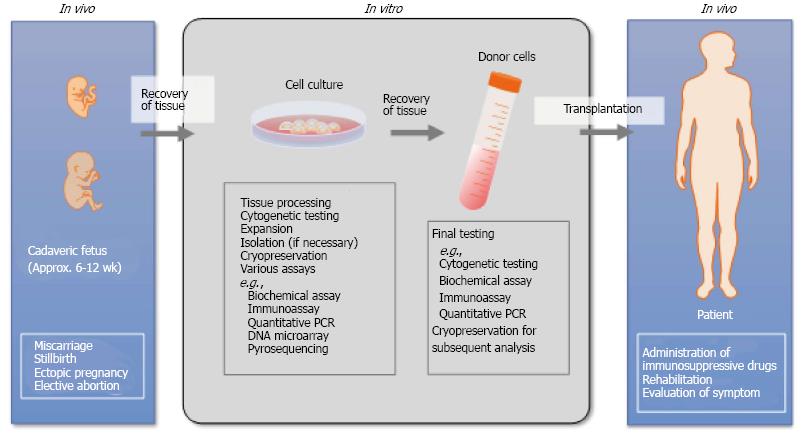Copyright
©2014 Baishideng Publishing Group Inc.
World J Stem Cells. Sep 26, 2014; 6(4): 404-420
Published online Sep 26, 2014. doi: 10.4252/wjsc.v6.i4.404
Published online Sep 26, 2014. doi: 10.4252/wjsc.v6.i4.404
Figure 1 Fetal tissue transplantation procedures.
Fetal tissue can be obtained from cadaveric fetuses for medical and non-medical reasons in obstetrics and gynecology hospitals. Procured fetal tissue, which was donated with consent for research, is processed in vitro, confirming cell function without contamination and genetic abnormality. After careful examination, donor cells are used for grafts primarily in the form of a cell suspension, which is usually intravenously or intraperitoneally injected or, otherwise, transplanted into predefined implant sites during surgery. Although fetal tissue cells are less likely to be rejected by transplant recipients, immunosuppressive drugs are administered in some cases. PCR: Polymerase chain reaction.
- Citation: Ishii T, Eto K. Fetal stem cell transplantation: Past, present, and future. World J Stem Cells 2014; 6(4): 404-420
- URL: https://www.wjgnet.com/1948-0210/full/v6/i4/404.htm
- DOI: https://dx.doi.org/10.4252/wjsc.v6.i4.404









